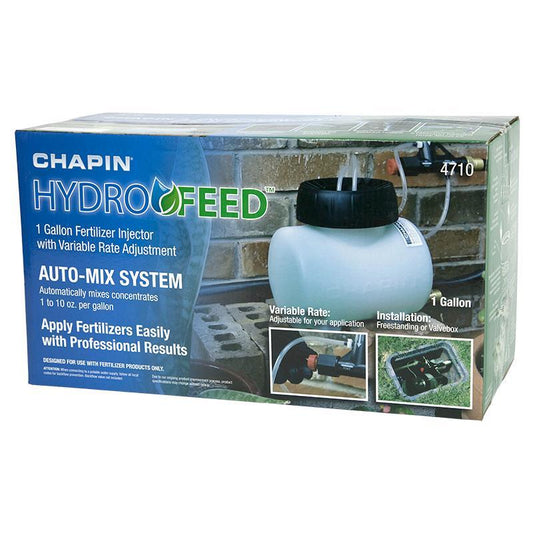Collection: Fertilize Through Your Irrigation with Injectors
Fertigation: A Revolution in Agriculture
Fertigation, the practice of combining fertilizers with irrigation water, has gained immense popularity in modern agriculture for its efficiency and effectiveness in delivering essential nutrients to crops. Fertilizer injectors play a pivotal role in this process by accurately mixing and distributing fertilizers into the irrigation system.
Understanding Fertigation and Its Benefits
Fertigation is a farming technique that enables growers to deliver fertilizers directly to the root zone of plants through irrigation systems. This method offers several advantages, including:
-
Precision Nutrition: Fertigation allows for precise control over nutrient delivery, ensuring that plants receive the right amount of fertilizers at the right time. This can lead to increased crop yields and improved quality.
-
Water Efficiency: By combining irrigation and fertilization, fertigation reduces water wastage. It optimizes water usage by delivering nutrients exactly where they are needed, minimizing runoff and leaching.
-
Labor Savings: Fertigation automates the fertilization process, reducing the need for manual labor. This not only saves time but also ensures consistent nutrient application.
-
Reduced Environmental Impact: The controlled release of fertilizers in fertigation systems helps minimize the environmental impact of farming by reducing nutrient runoff into water bodies.
The Role of Fertilizer Injectors
Fertilizer injectors are essential components of a fertigation system. These devices accurately mix and dispense fertilizers into the irrigation water. They come in various types, each catering to specific needs and preferences of farmers.
Types of Fertilizer Injectors
-
Venturi Injectors: Venturi injectors utilize the Venturi effect to draw and mix fertilizers into the irrigation water. They are simple, reliable, and cost-effective, making them a popular choice for many growers.
-
Diaphragm Injectors: Diaphragm injectors use a diaphragm or piston mechanism to control the flow of fertilizers into the irrigation system. They offer precise control and are suitable for larger-scale operations.
-
Peristaltic Pumps: Peristaltic pumps operate by squeezing a tube to transport fertilizers into the irrigation water. They are highly accurate and low-maintenance, making them suitable for precise applications.
-
Electric Injectors: Electric injectors are powered by electricity and offer programmable control over fertilization rates. They are ideal for farms where precise dosing and automation are critical.
Key Features of Fertilizer Injectors
When selecting a fertilizer injector, farmers should consider several key features to meet their specific needs:
-
Flow Rate: Different injectors have varying flow rates. It's important to choose an injector that matches the flow rate of the irrigation system to ensure consistent fertilizer application.
-
Material and Durability: The materials used in the construction of the injector should be durable and resistant to corrosion, ensuring a long lifespan.
-
Compatibility: Ensure that the injector is compatible with the type of fertilizers and chemicals you intend to use in your fertigation system.
-
Ease of Maintenance: Choose an injector that is easy to clean and maintain to avoid downtime during the growing season.
In Summary
Fertilizer injectors are indispensable tools for modern agriculture, enabling growers to efficiently and effectively provide essential nutrients to their crops. With various types and features available, farmers can select the injector that best suits their needs and preferences, ultimately leading to healthier, more productive crops and more sustainable farming practices. Fertigation, coupled with the right fertilizer injector, is revolutionizing how we cultivate and nourish our crops, promising a greener and more prosperous future for agriculture.
To denote which fertilizers are appropriate for injecting, we have indicated them with an "i" for “injectable” and they are listed as such on our Fertilizer Solutions Chart. Most fertilizers in this section are injectable, but please note which of these products are dry and must be premixed with water before being injected. Irrigation lines should always be cleaned after fertigation by flushing with clean water before and/or after fertilizing. Use Therm X70 when flushing irrigation lines.







